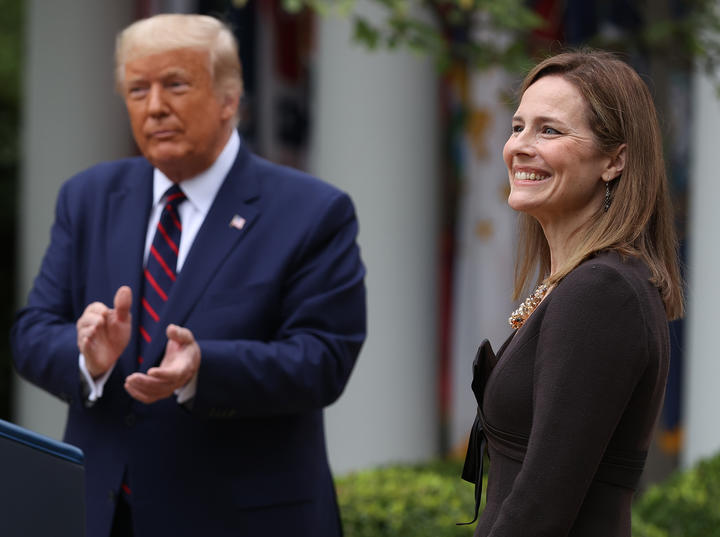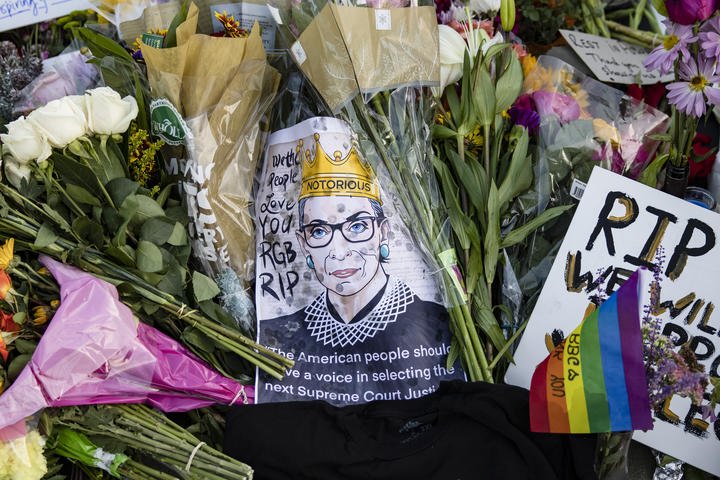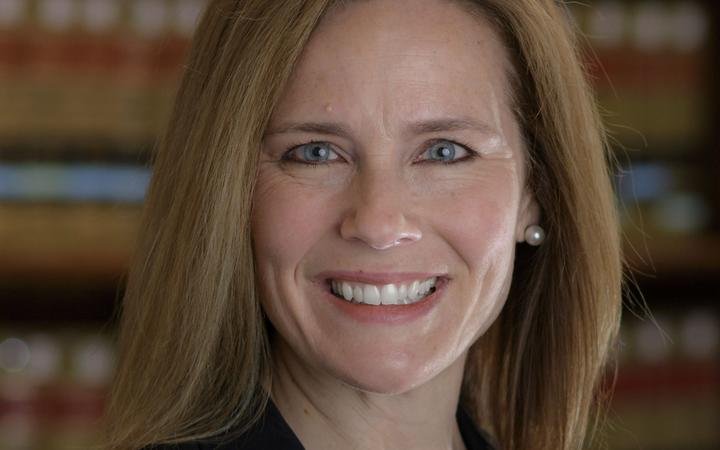Donald Trump nominates Amy Coney Barrett as Supreme Court Justice

US President Donald Trump announces Amy Coney Barrett as his nomination for the Supreme Court. Photo: Getty Images
US President Donald Trump has announced conservative appellate judge Amy Coney Barrett as his third US Supreme Court appointment, setting off a scramble in the Republican-led Senate to confirm her before Election Day in five-and-a-half weeks.
Barrett appeared at the White House with Trump as he made the announcement. Trump called her “one of our nation’s most brilliant and gifted legal minds.”
If confirmed to replace liberal icon Ruth Bader Ginsburg, who died at age 87 on 18 September, Barrett would become the fifth woman ever to serve on the top US judicial body and push its conservative majority to a commanding 6-3. With Trump’s fellow Republicans controlling the Senate, confirmation appears certain, though Democrats may try to make the process as difficult as possible.
Barrett, 48, was appointed by Trump to the Chicago-based 7th US Circuit Court of Appeals in 2017 and is a favourite of religious conservatives, a key Trump voter bloc. Conservative activists have hailed Trump’s selection, which surfaced on Friday night, while liberals have voiced dismay.
Like Trump’s two other appointees, Neil Gorsuch in 2017 and Brett Kavanaugh in 2018, Barrett is young enough that she could serve for decades. Barrett is the youngest Supreme Court nominee since conservative Clarence Thomas was 43 in 1991.
The White House ceremony was decorated with American flags arranged in a way similar to the day when President Bill Clinton nominated Ginsburg in 1993.

A makeshift memorial in honour of Supreme Court Justice Ruth Bader Ginsburg in front of the US Supreme Court Photo: AFP
The selection kicks off a flurry of activity that must take place before the final confirmation vote, including public hearings in the coming weeks before the Senate Judiciary Committee.
A White House source said the nominee on Tuesday will begin the traditional courtesy calls on individual senators in their offices, with Senate Majority Leader Mitch McConnell up first. White House Counsel Pat Cipollone is expected to shepherd the nomination.
Judiciary Committee Chairman Lindsey Graham, who mounted an angry defense of Kavanaugh during tense confirmation hearings in 2018, has signalled he expects to have Barrett confirmed as a justice by the 3 November election in which Trump is seeking a second term.
Democrats are still furious over McConnell’s 2016 refusal to consider President Barack Obama’s Supreme Court nomination of Merrick Garland because it came during an election year. Democratic presidential candidate Joe Biden has said the winner of the election should get to replace Ginsburg.
Republicans hold a 53-47 Senate majority. Only two Republican senators have opposed proceeding with the confirmation process.
Abortion rights advocates have voiced concern that Barrett, a devout Roman Catholic, could cast a vote for overturning the landmark 1973 Roe v. Wade ruling legalising abortion nationwide.
Jeanne Mancini, president of March for Life, an anti-abortion group, in a statement on Saturday expressed confidence that Barrett “will fairly apply the law and Constitution as written, which includes protecting the most vulnerable in our nation: our unborn children.”
Brian Burch, president of CatholicVote, a faith-based advocacy group, added, “Catholics are thrilled with the expected nomination of Judge Amy Coney Barrett and believe she represents the best choice to protect the rule of law and our constitutional rights.”
Abortion rights groups and other liberal-leaning organisations announced plans for a protest against her nomination on Sunday in front of the Supreme Court.
Barrett has staked out conservative legal positions in three years on the bench, voting in favor of one of Trump’s hardline immigration policies and showing support for expansive gun rights. She also authored a ruling making it easier for college students accused of campus sexual assaults to sue their institutions.

Amy Coney Barrett. Photo: AFP / University of Notre Dame / Julian Velasco
She and her lawyer husband have seven children, two of whom were adopted from Haiti. Born in New Orleans, Barrett received her law degree from Notre Dame Law School, a Catholic institution in Indiana.
The other finalist mentioned by Trump to fill the vacancy was Barbara Lagoa, a Cuban-American federal appeals court judge from Florida who he appointed last year.
Trump has said he wants his nominee confirmed before the election so she would be able participate in any election-related cases that reach the justices, potentially casting a key vote in his favor. A US presidential election’s outcome only once has been determined by the Supreme Court, in 2000 when it clinched Republican George W. Bush’s victory over Democrat Al Gore.
Trump has repeatedly without evidence said voting by mail, a regular feature of American elections, will lead to voter fraud. He also has refused to commit to a peaceful transfer of power should he lose the election.
This marks the first time since 1956 that a US president has moved to fill a Supreme Court vacancy so close to an election. In that year, President Dwight Eisenhower three weeks before winning re-election placed William Brennan on the court using a procedure called a “recess appointment” that bypassed the Senate, a tactic no longer available for installing justices.
An emboldened Supreme Court conservative majority could shift the United States to the right on hot-button issues by, among other things, curbing abortion rights, expanding religious rights, striking down gun control laws, and endorsing new restrictions on voting rights.
